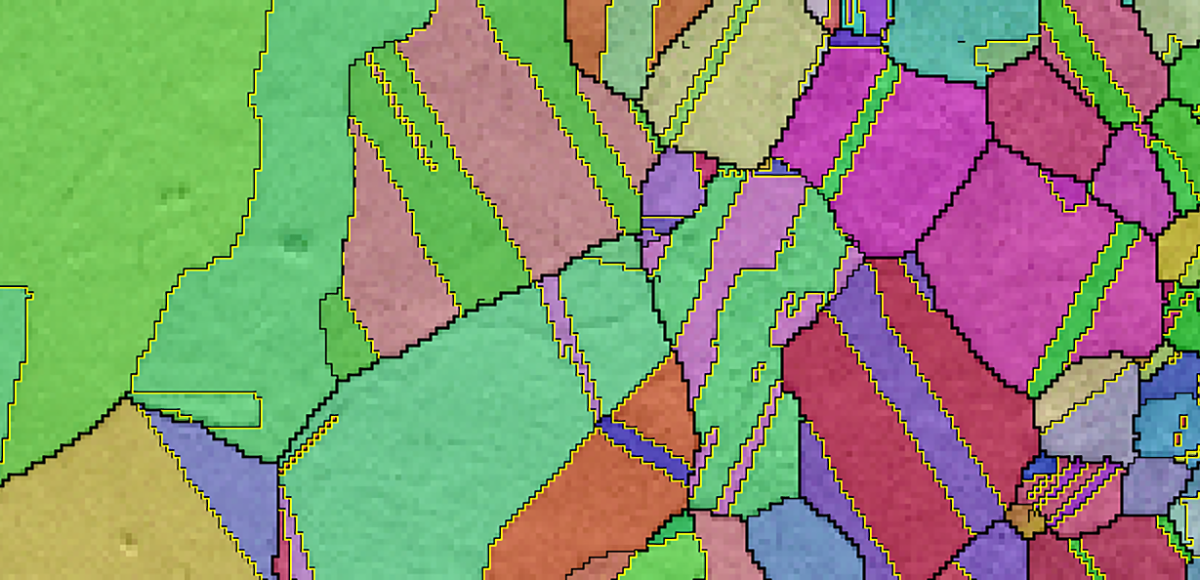Metals & Alloys
Common challenges
Metals and alloys are critical building blocks of many products, from nanomaterials to architectural structures. The specific composition of an individual metal or alloy is critical to achieve a desired strength, microstructure, or corrosion resistance of a material. To achieve this specific composition, researchers will study topographical or microstructural features to better understand the alloy composition of raw materials, conformance to a purity specification, identify alloys used to make a specific component, or investigate foreign contaminants during component failure analysis. Useful information to better understand these attributes includes:
- Use of adequate preparation technique for analysis
- Ability to discriminate fine sample details
- Capture sintering, recrystallization and phase transformations in real-time
Innovative Techniques
To adequately characterize and understand metals and alloys, you must first ensure each specimen is of the highest quality to resolve the material interface and properly controlled so you manipulate it, when necessary, under environmental stimuli. Once prepared, several techniques are available to better understand material complexities and failures to improve device performance.
|
Award winning, high resolution imaging tools help you to understand material growth, devices ultrastructure and failures.
|
Atomic resolution chemical and compositional analysis.
|
|
Family of imaging techniques to enhance, map and quantify elements and chemicals in an image with nanometer resolution.
|
Systematic method to generate a spatially resolved distribution of EELS data.
|
|
Real-time observation of growth processes, chemical reactions and oxidation, irradiation effects, mechanical, magnetic, and ferroelectric properties.
|
Specimen preparation
High-performance tools to cut, etch, polish and freeze samples for your unique SEM, TEM or STEM application.
|
|
Useful to elucidate elemental or chemical characterization of a sample.
|
Helps you examine crystallographic orientation or texture of materials.
|
Visit compositional or chemical analysis to learn more about related applications.
Enabling results
Adequate preparation for compositional analysis
During an EBSD experiment, surface damage can significantly alter diffraction patterns you obtain from crystalline samples. Therefore it is important for you to use an electropolishing tool, such as the PECS II system, to ensure your specimen's surface is sufficiently smooth to prevent shadow formation in your diffraction pattern. The image below shows that the PECS II system was able to preserve the integrity of a highly stressed Zircaloy 2 alloy sample so that you can distinguish high resolution boundaries of an IPFZ map with a 1 x 0.7 mm field of view of a . Results courtesy of Department of Materials, University of Oxford. Professor Angus Wilkinson and Dr. Hamidreza Abdolvand. Sample prepared with a PECS II system. Data acquired on a Zeiss Compact Merlin equipped with a Bruker Quantax EBSD System.

Discriminate fine sample details
Specimen motion, drift and irradiation damage are common challenges you may encounter with sensitive samples or when you measure sample activity over time. When you employ a live drift correction to automatically and constantly remove the shift between adjacent images to eliminate most or all of the artifact and resolution loss. Below image shows highly sensitive zeolite sample at 4k x 4k resolution that were acquired using the OneView® camera.

Capture sintering, recrystallization and phase transformations
Below shows gold nanoparticles sintering during an in-situ experiment. See how you can use the OneView camera to record individual images at full resolution, so every frame in these video is a 4k x 4k high resolution image. This enables post-processing later – whether you’re extracting individual images, applying post-capture drift correction or creating movies from all or just a portion of the images. You are able to capture reactions at extremely high temporal and spatial resolution. Below, on the far left the movie shows full field of view (35 x 35 nm2), and skipped 5 frames, 1k x 1k. The middle movie is cropped to region of interest (ROI), bin x1, and skipped 3 frames. The far right movie has been cropped to ROI and binned x1.
Image on left is an EBSD map of bronze specimen recrystallization taken in situ at 800 ºC. Image on the right shows the ability to study dynamic EBSD phase transformations within the tight geometry restrictions of a SEM.

